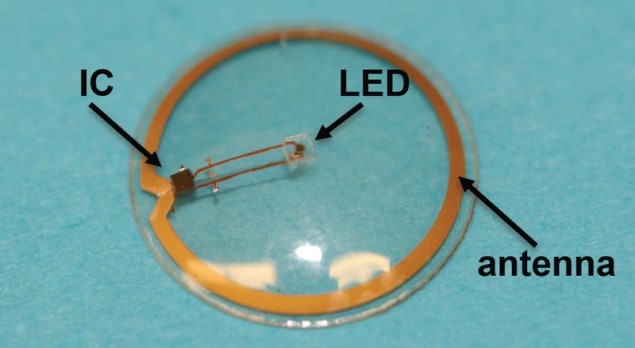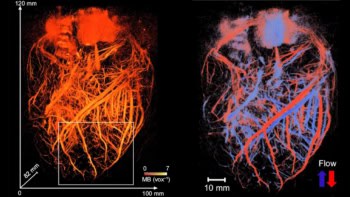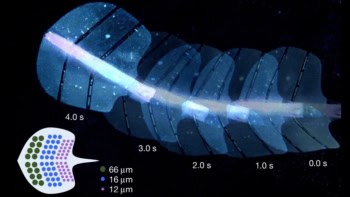
The idea of having images and text streamed live across your contact lenses has been used in many a Hollywood film. Now an international team of researchers has developed the first working prototype for such a device – they have constructed and tested a prototype contact lens capable of streaming real-time information across the field of vision; potentially providing the wearer with information updates. The researchers claim that their device will have a variety of uses, such as a biosensor, augmented reality systems, gaming devices, navigation systems and even as an aid to the hearing impaired.
In a study published in the Journal of Micromechanics and Microengineering, the researchers from the University of Washington, Seattle, and Aalto University in Finland describe how they constructed a computerized single-pixel contact lens and then demonstrated its safety by testing it on live eyes that showed no adverse side effects.
“Our group has expertise in miniaturization and integration of devices into unconventional substrates. The contact lens is a perfect platform for this. We also wanted to explore if it is possible to have a single personal display instead of numerous devices with numerous displays per person,” explains lead researcher Babak Parviz from the University of Washington. The current design works as a “proof of concept” for more advanced lenses with multiple pixels, which could be used to display short e-mails and text messages.
Eye of knowledge?
The lens display consists of an antenna to harvest power sent out by an external source, as well as an integrated circuit to store this energy and transfer it to a transparent sapphire chip containing a single blue LED. All these modifications do not affect the function as a normal contact lens in any way, according to Parviz.
The device could overlay computer-generated visual information onto the “real world”, making it easy to access information instantly from platforms such as mobile phones. It could also be linked to a biosensor in the user’s body to generate updates, alerting the wearer to any changes in his or her glucose or lactate levels.
Close-range focus
One of the major challenges faced by the team while making the lens system more biocompatible was overcoming the fact that the human eye cannot resolve objects on a contact lens as its minimum focal distance is several centimetres away at least, making any information on the lens itself look blurry and out of focus. To combat this, the researchers incorporated a set of micro-Fresnel lenses – Fresnel lenses are generally thinner and flatter than an average lens and have short focal lengths – into the lens, allowing it to focus the projected image onto the retina.
After testing the contact lens in free space, it was fitted to the eye of a rabbit, under the strict guidelines for animal use in the laboratory, to see the effect of wearing the contact lens on the cornea and the body in general. In addition to visualizing techniques, a fluorescent dye was added to the eye of the rabbit to test for any abrasion or thermal burning. The team saw absolutely no adverse effects to the cornea after testing.
Hi-res lenses of the future
In the days to come, the researchers will be looking into making improvements that will allow them to produce a fully functional, remotely powered, high-resolution display on the lens. Currently, the lens can be wirelessly powered in free space from approximately one metre away, but this was reduced to about two centimetres when placed on the rabbit’s eye. They are also looking into easily resolving text onto the display. “We still need to perfect the focusing mechanism further before we can do this if the text is arbitrary. Pre-determined text is a lot easier,” explains Parviz.
The research is described in J. Micromech. Microeng. 21 125014.



